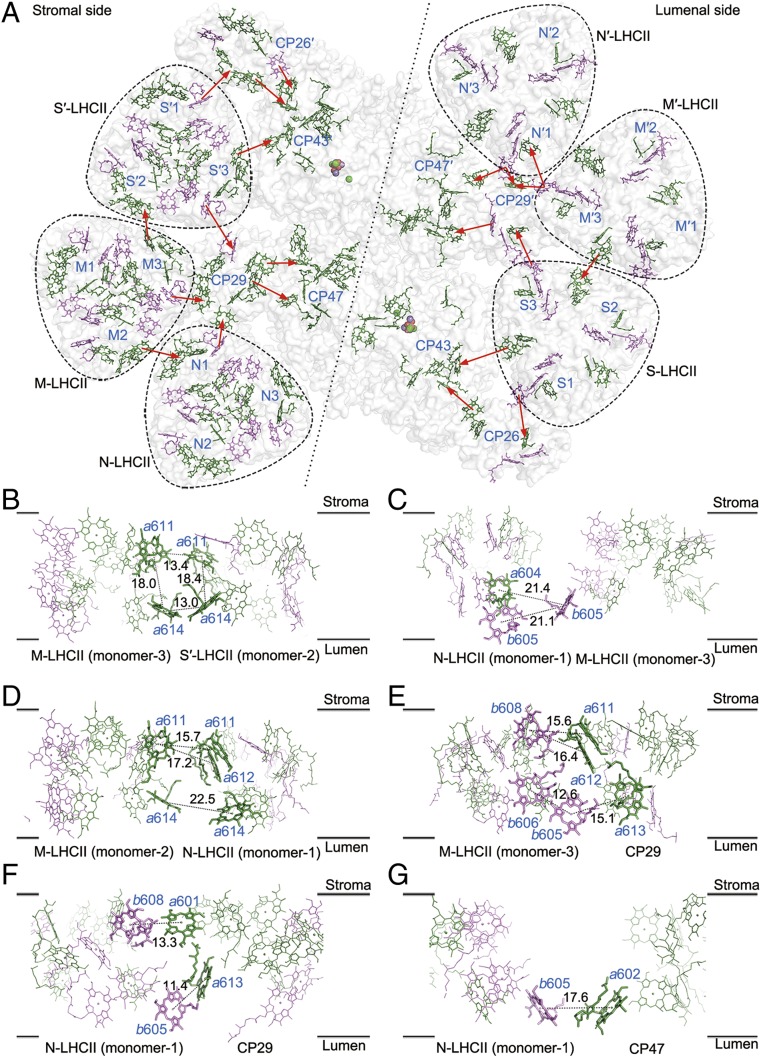Fig. 6.
Pigment arrangement and possible excitation energy transfer pathways from peripheral antenna complexes to the reaction center in the C2S2M2N2-type PSII–LHCII supercomplex of C. reinhardtii. (A) Chlorophyll distribution and possible energy transfer pathways within the whole PSII–LHCII supercomplex. Chlorophylls distributed in the stromal side layer are shown (Left), as are those distributed in the luminal side layer (Right). Chl a and Chl b are colored in green and violet, respectively. Possible energy transfer pathways from the peripheral antennae to the PSII core and among the antennae are indicated by red arrows. (B–G) The interfacial chlorophylls between M-LHCII (monomer 3) and S′-LHCII (monomer 2) (B), N-LHCII (monomer 1) and M-LHCII (monomer 3) (C), N-LHCII (monomer 1) and M-LHCII (monomer 2) (D), M-LHCII (monomer 3) and CP29 (E), N-LHCII (monomer 1) and CP29 (F), and N-LHCII (monomer 1) and CP47 (G). These panels are viewed from the side of the membrane, with the upper layer representing the stromal layer and the lower layer representing the luminal layer. Chlorophylls involved in the possible energy transfer are highlighted as sticks and labeled with blue. The Mg-to-Mg distances (Å) between 2 adjacent interfacial chlorophylls are indicated in black.

